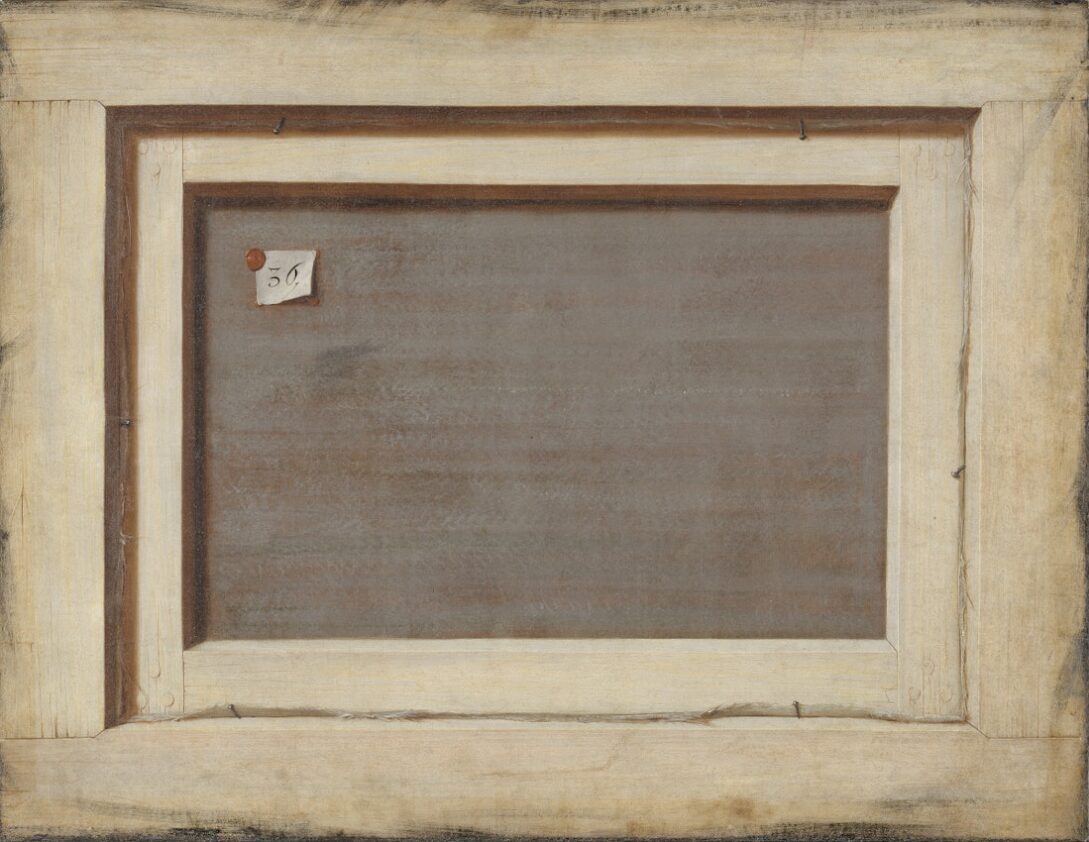Documentation
[TiM Recap] “Reparative Encounters: Colonial Histories, Other-Archives, and Collaborative Artistic Research” – Daniela Agostinho (Aarhus)
by Ani Encheva
“What is no longer archived in the same way is no longer lived in the same way.”
– Jacques Derrida (1995, 18)

Cornelis Norbertus Gijsbrechts, The Reverse of a Framed Painting (ca. 1670)
As colonial archives become digitized, what new sites of silence and forgetfulness emerge? How do contemporary visual art practices engage with Danish colonial history to trace and make sense of its enduring legacies? How can we imagine, create, and invigorate alternative archives that tap into the voids, elucidating untold, neglected, and unremembered experiences?
These questions framed the opening seminar of the 2024/2025 Transmission in Motion series, held on October 16, 2024, in the Grote Zaal of the Department of Media and Culture at Utrecht University. Titled “Reparative Encounters: Colonial Histories, Other-Archives, and Collaborative Artistic Research,” the seminar was led by Daniela Agostinho, Assistant Professor in Digital Communication and Culture at Aarhus University. Through a lecture and a subsequent Q&A, Agostinho argued how collaborative artistic research can become an archiving method in its own right – one that seeks to repair colonial legacies and weave uncharted narratives into the future record.
Reparative Encounters
In the first half of her talk, Agostinho introduced the ongoing work of the Reparative Encounters network for artistic research, which brings together artists, curators, and researchers from the U.S. Virgin Islands, Ghana, and Kalaallit Nunaat – all locations impacted in distinct ways by Danish colonialism. Agostinho highlighted three of the network’s workshops that featured artist talks, film screenings, and art exhibitions, including Nipangersitassaanngitsut // Those Who Can’t be Silenced (2023) by Julie Edel Hardenberg, Figures of Stitch and Other Figures (2024) by Dorothy Amenuke and curated by Dr. Bernard Akoi-Jackson, and Being of Myth and Memory (2024) by La Vaughn Belle and curated by Dr. Erica Moiah James (Figure 1). Through these examples, Agostinho underscored Reparative Encounters’ mission to revisit, repair, and reframe colonial histories by expanding the discourse beyond the colonial center – a practice she described as “de-centering Denmark.” Through this transcontinental approach, the network, as Agostinho pointed out, seeks not only to disrupt colonial structures but also to forge a collaborative cartography of experiences, vocabularies, and practices that emerge from each locale and in dialogue with one another, tracing the “materiality of implications.”
“What Archives Can’t Do, but Artistic Practices Can”
By delving into the work of Reparative Encounters, Agostinho posited that collaborative artistic research can bring forth “other-archives” – artist-led approaches to colonial legacies that encourage us to look beyond the confines of Western documentary evidence and toward forms of embodied, sensuous, poetic, affective, speculative, and performative memory work. By advancing this shift, she proposed that these artistic practices might embody what Christina Sharpe describes as “new ways of entering and leaving the archives of slavery” (2016, 13) while simultaneously challenging the limitations of established knowledge frameworks through an engagement with what Sara Ahmed calls the need to “unlearn how to know” (2000, 72). Ultimately, Agostinho concluded that such collaborative artistic projects, which grapple with colonial histories beyond archival access, can deepen dialogues between communities, facilitate the repair of colonial separations, and cultivate spaces where “disregarded memories, myths, absences-presences, retellings of events, silences and whispers” can surface.
“Not Simply Telling Stories, but Creating New Vocabulary to Tell These Stories”
In the Q&A following Agostinho’s lecture, participants explored how we can trace, articulate, and draw attention to the realities of genocidal extraction, the haunting implications of digitizing historical records, and the necessity of occasionally putting certain visual narratives to rest to prevent them from becoming restless once digitized. Additionally, participants delved into Agostinho’s notion of “the terrain between curating cultures and curated cultures,” acknowledging that curation involves a delicate balance between visibility and invisibility, along with a sensitivity to the new absences created in the act of making visible. As the seminar drew to a close, Agostinho left us with a poignant question – at this intersection of colonial histories, collaborative artistic research, and other-archives, how can we nurture alternative modalities of knowing by re-directing attention toward “not simply telling stories, but creating new vocabulary to tell these stories?”
References
- Ahmed, Sara. 2000. Strange Encounters: Embodied Others in Post-Coloniality. London: Routledge.
- Derrida, Jacques. 1995. “Archive Fever: A Freudian Impression.” Translated by Eric Prenowitz. Diacritics 25 (2): 9-63. https://doi.org/10.2307/465144.
- Sharpe, Christina. 2016. In the Wake: On Blackness and Being. Durham and London: Duke University Press.

